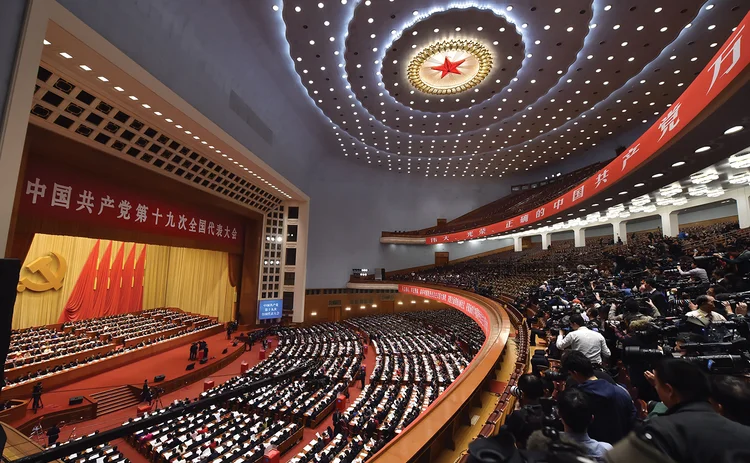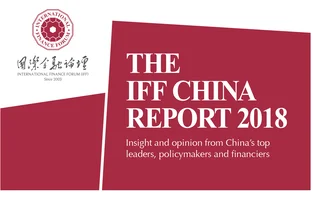
After the Congress – A new direction for China
Qiu Xiaohua, chief economist at Minsheng Securities, lays out his multipoint plan for a resurgent China and the dividends that reform, internationalisation and a mixed economy will bring to the country and the global community


Following the 19th National Congress of the Communist Party of China (CPC), a question has arisen: where is the Chinese economy heading?
First, the Chinese economy will serve the Chinese Dream. This comprises two goals for the next century and a three-step blueprint programme that aims to rejuvenate China. The ultimate goal is one of national development, ensuring the future stability and strength of China’s economy.
Second, the Chinese economy will part from the traditional mode of development and move to a new stage. Domestically, China will shift its priority in manufacturing from quantity to quality. Industrial systems will be reconstructed to enhance the global competitiveness of China’s industries by focusing on the Made in China 2025 and Internet Plus policies. Internationally, the Chinese economy will be upgraded from version 1.0 to version 2.0 through steady internationalisation of the renminbi and the implementation of the Belt and Road Initiative (BRI). China as a major power hopes to present to the world a responsible image and create a new international environment for its peaceful rise.

Third, free-trade areas are the focus of institutional reform that will provide a fair and level playing field for foreign and domestic enterprise, as well as state-owned and private sectors. In terms of market management, it will shift from positive- to negative-list management, which will meet the demands of international rules and provide an institutional guarantee for better integration of the Chinese and foreign economies. In addition to institutional adjustment, China will develop a number of new international investment and financing platforms with Chinese characteristics – including the Asia Infrastructure Investment Bank, the Silk Road Fund and the New Development Bank – to encourage Chinese enterprise to ‘Go Out’ while introducing foreign enterprise to the Chinese market. As part of its foreign policy, it will help countries and regions along the BRI carry out infrastructure and industrial system construction that will contribute to socioeconomic development.
A dynamic shift
There will be several distinctive features of China’s foreign trade:
- A shift from a trade-oriented model to one that gives equal importance to both trade and investment. China has entered a new stage that prioritises the export of commodities and capital over the export of commodities alone.
- A move from a ‘bringing in’ model to one that embraces both bringing in and ‘Going Out’.
- Acting not only as a follower of international trade and investment rules but also as a participator and rule‑maker. China’s foreign trade will discard its old model and move to a new development platform.
- Complying with three new trends to realise the Chinese economy’s new development:
1. The trend of transnational management – China will vigorously develop and expand multinational corporations to enhance the competitiveness of its international operations.
2. Push for the integration of different fields – China will develop new cross-border channels through connecting mobile internet, intelligence and ecosystems to achieve more co-ordinated and harmonious resource allocation.
3. The adjustment to the new Chinese political economy’s characteristics and accomplishment of cross-ownership development – to this end, it will be seen that state-owned enterprises in the future will play a major role in traditional industries, including steel, coal and non-ferrous building materials. This will help industry structures become more concentrated. In the new economy and industries, new forms of ownership distinguished by market orientation, and new business forms, models and mechanisms will become dominant. In this respect, the private sector will serve as the backbone of the mixed‑ownership economy. - Constantly improving the Chinese economy’s unfavourable situations by identifying and accumulating new dividends, which will come from four directions: demographics, comprehensive institutional reform, continuing and reinforcing the ‘opening‑up’ policy and innovation.
1. Dividends of demographics – it will support an innovative economy by providing a better and more effective leverage of human capital.
2. Dividends of comprehensive institutional reform – political, economic, social, cultural and ecological reforms could offer new institutional dividends to propel the development of the Chinese economy.
3.Dividends brought by continuing and reinforcing the opening‑up policy – China will be given more room to manoeuvre in resources, markets, capital, technology and management through global resource allocation, global production and global marketing.
4. Dividends of innovation – China aims to achieve innovative development through various sectors, including institutions, mechanisms, business models and technologies. New dividends are intended to transform China’s development model from high-speed to high-quality growth and from unbalanced to balanced development. It will move from a predominantly factor-driven approach to an innovation-driven one, from industry-dominated development to new co-ordinated synergetic development of industry, agriculture and the services sector. - Maintaining the Chinese economy’s commitment to five new concepts of development – innovative, co-ordinated, green, open and shared development. This is China’s direction and will become the basic requirement for Chinese enterprises and investors to follow. It can be expected that, following the 19th CPC National Congress, these concepts will deliver fruitful outcomes and write new chapters for the Chinese economy if they can be facilitated and implemented.
Judging China’s present economic development, its economy is now seeing an end to the downward period endured since 2010, and is shifting to a more stable and quality-prioritised phase that focuses on optimising structure. It is a new stage of social development that prioritises the pursuit of a better life and a fair and just society.
Only users who have a paid subscription or are part of a corporate subscription are able to print or copy content.
To access these options, along with all other subscription benefits, please contact info@centralbanking.com or view our subscription options here: subscriptions.centralbanking.com/subscribe
You are currently unable to print this content. Please contact info@centralbanking.com to find out more.
You are currently unable to copy this content. Please contact info@centralbanking.com to find out more.
Copyright Infopro Digital Limited. All rights reserved.
As outlined in our terms and conditions, https://www.infopro-digital.com/terms-and-conditions/subscriptions/ (point 2.4), printing is limited to a single copy.
If you would like to purchase additional rights please email info@centralbanking.com test test test
Copyright Infopro Digital Limited. All rights reserved.
You may share this content using our article tools. As outlined in our terms and conditions, https://www.infopro-digital.com/terms-and-conditions/subscriptions/ (clause 2.4), an Authorised User may only make one copy of the materials for their own personal use. You must also comply with the restrictions in clause 2.5.
If you would like to purchase additional rights please email info@centralbanking.com test test test







